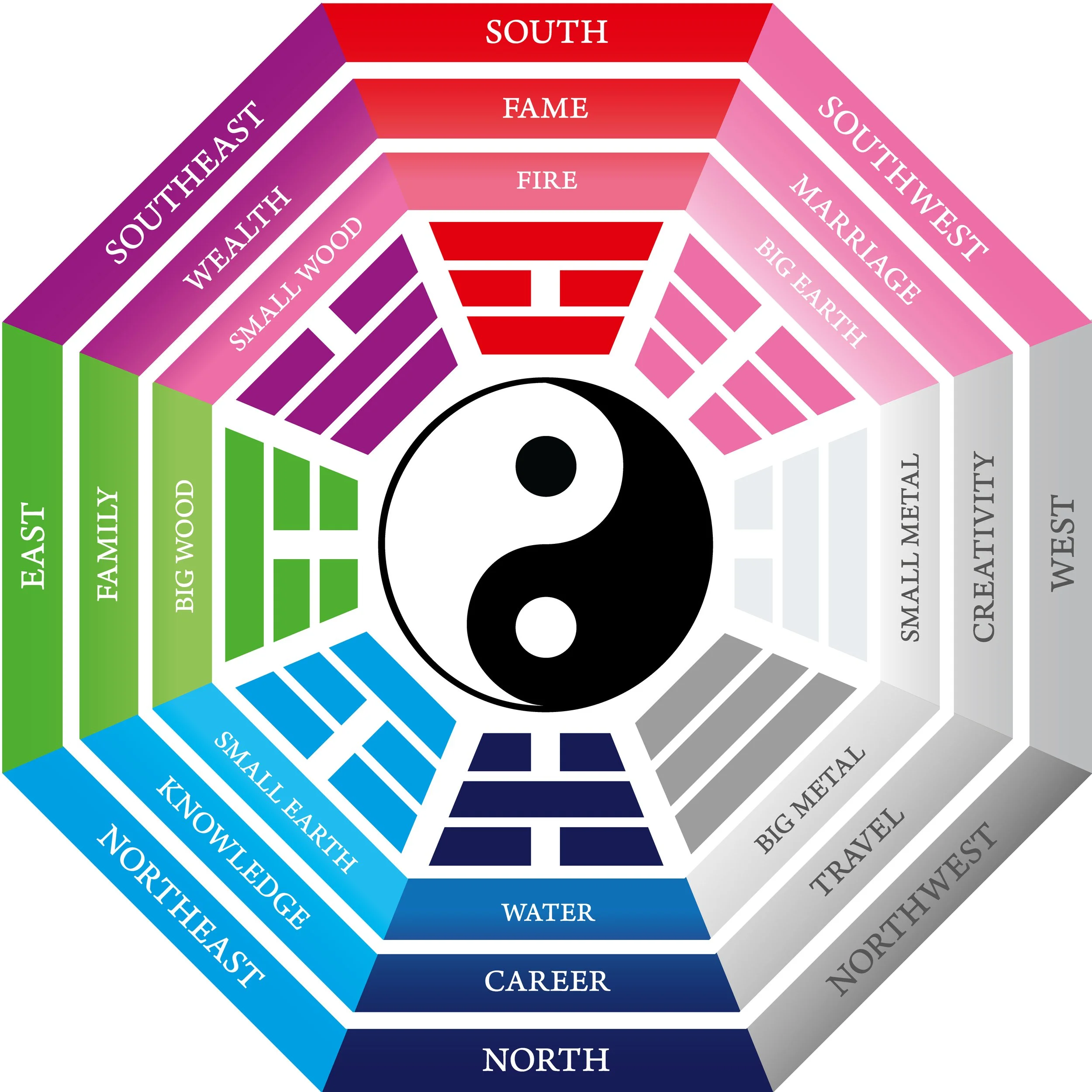The Bagua
The bagua or pakua are a set of eight symbols that originated in China. Used inTaoist cosmology it represents the fundamental principles of reality, seen as a range of eight interrelated concepts and it is an essential tool in the majority of Feng Shui schools. Bagua literally means eight symbols or eight areas. Ba meaning 8 and gua meaning ‘area’.
In the centre of the Bagua 8 groups of three lines, or trigrams surround the yin yang symbol. A broken line is yin, representing the receptive (female) force of nature, and a solid line is yang, representing the creative (male) force of nature.
The Bagua is an ancient Chinese concept used primarily in Feng Shui, Taoist cosmology, and the I Ching (Book of Changes). It is a symbolic octagonal diagram that represents the fundamental principles of reality, mapping out how different aspects of life are interconnected.
Structure of The Bagua
1. The Eight Trigrams represent different natural elements, energies, and aspects of life:
Qian (Heaven): Creativity, strength, fatherhood.
Kun (Earth): Receptivity, nurturing, motherhood.
Zhen (Thunder): Initiation, action, new beginnings.
Xun (Wind/Wood): Growth, flexibility, abundance.
Kan (Water): Depth, danger, wisdom.
Li (Fire): Clarity, illumination, passion.
Gen (Mountain): Stillness, stability, meditation.
Dui (Lake): Joy, reflection, communication.
2. Directional and Elemental Associations: Each trigram is associated with a specific direction (north, south, east, west, and their intermediates) and one of the Five Elements (wood, fire, earth, metal, and water). These associations influence how energy flows in a space.
3. Life Aspects: In Feng Shui, the Bagua is often superimposed on a home or space to analyze and harmonize different areas of life. Each section corresponds to a specific life aspect:
Career (North)
Knowledge & Self-Cultivation (Northeast)
Family & Health (East)
Wealth & Prosperity (Southeast)
Fame & Reputation (South)
Love & Relationships (Southwest)
Children & Creativity (West)
Helpful People & Travel (Northwest)
Uses of The Bagua
Feng Shui: Practitioners use the Bagua map to evaluate how energy, or "chi," flows in a space, suggesting changes to improve harmony, prosperity, and well-being. Specifically, the Bagua is a tool used in Western forms of feng shui to map a room or location and see how the different sections correspond to different aspects in one's life. In this system, the map is intended to be used over the land, one's home, office or desk to find areas lacking good chi, and to show where there are negative or missing spaces that may need rectifying or enhancing in life or the environment. For example, if the Bagua map is placed over the entire house plan and it shows the toilet, bathroom, laundry, or kitchen in the wealth/blessings area it would be considered that the money coming into that particular environment would disappear very fast as if to be 'going down the drain.
Divination (I Ching): The Bagua is fundamental to the I Ching, where the trigrams are combined to form hexagrams used in divination, offering guidance and insights.
Martial Arts and Taoist Practices: The principles of the Bagua are also used in martial arts, such as Baguazhang, and Taoist meditative practices, emphasizing movement, balance, and energy flow.
The Bagua serves as a profound tool for understanding the interconnectedness of nature, human life, and the universe, guiding both philosophical inquiry and practical applications. It embodies the concept of yin and yang, the dual forces that create balance and harmony in the universe.
Early Heaven Sequence
The Early Heaven Sequence (the Primordial Bagua), is an arrangement of opposites. Early Heaven arrangement refers to the order of things before creation.
Later Heaven Sequence
The Later Heaven Sequence is used in Feng Shui and it depicts what happens after creation so it is associated with the material world. In the Later Heaven Bagua the trigrams are placed differently than in the Early Heaven Bagua. They are not arranged in opposites. South is always shown at the top of the Bagua.
A more complex Bagua is below.



